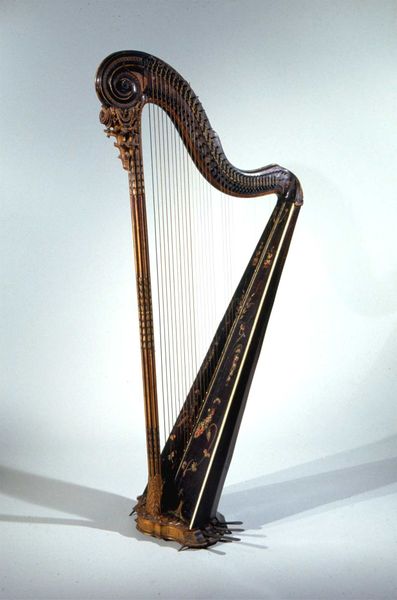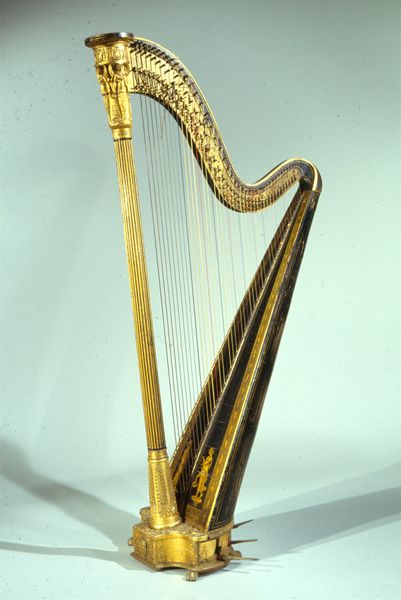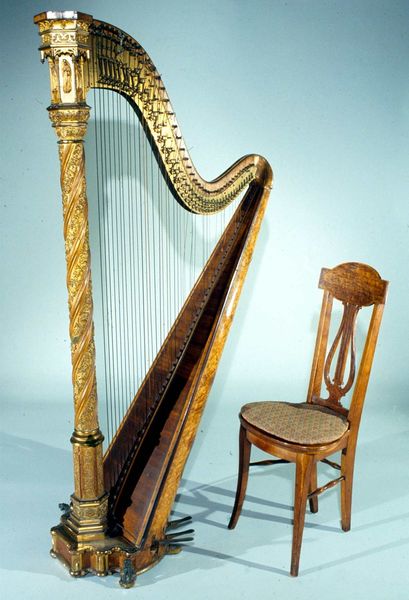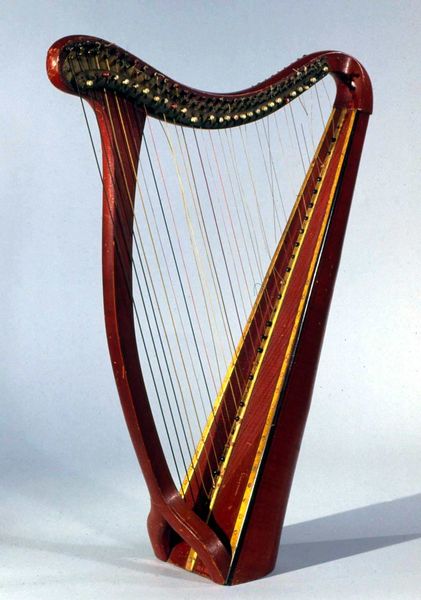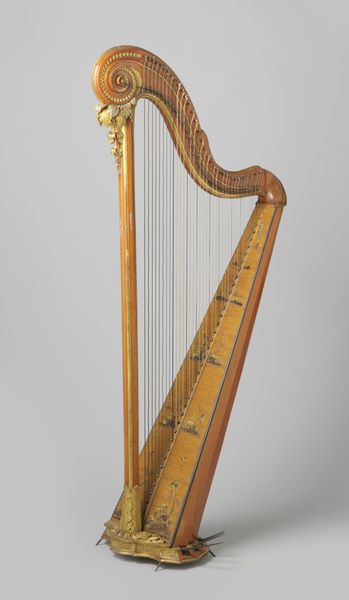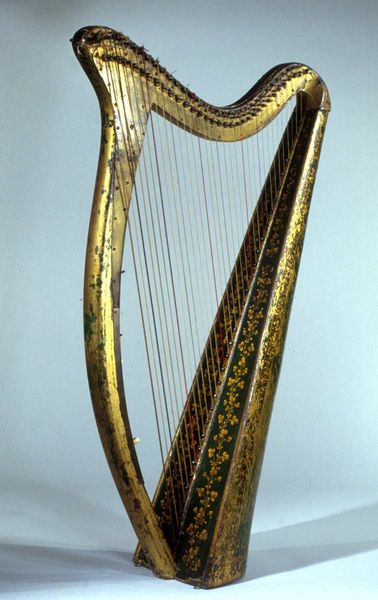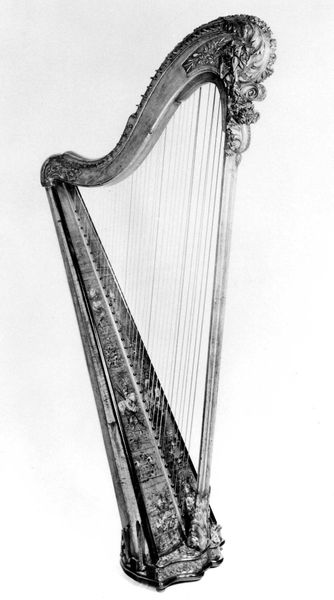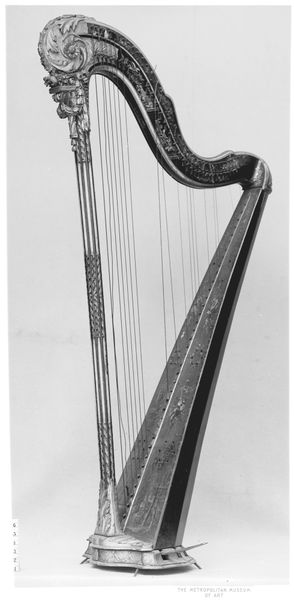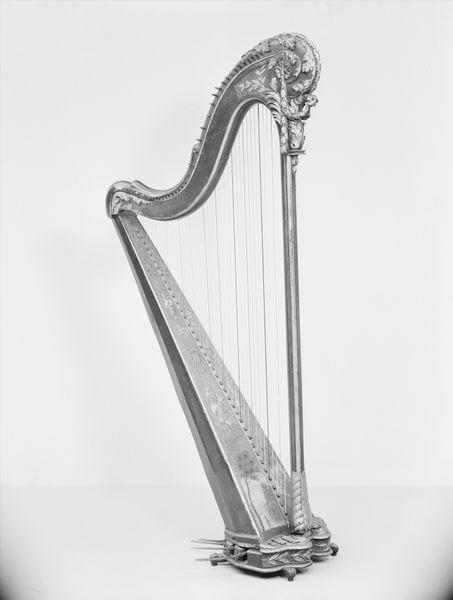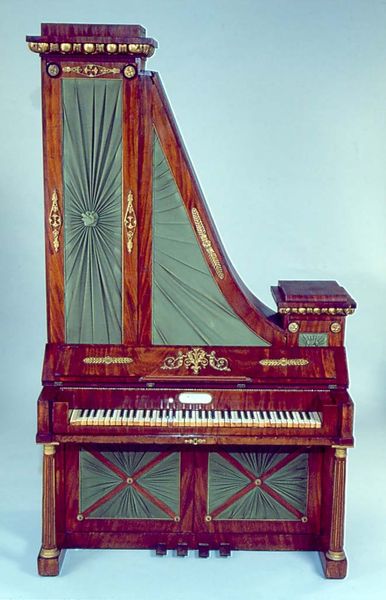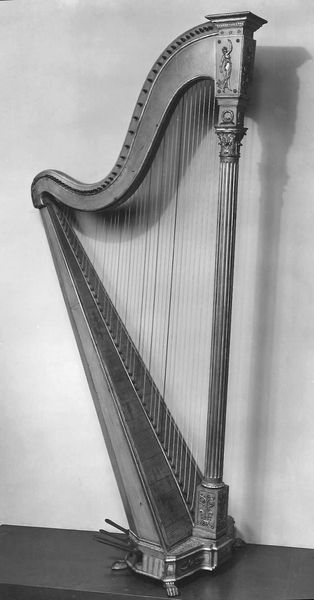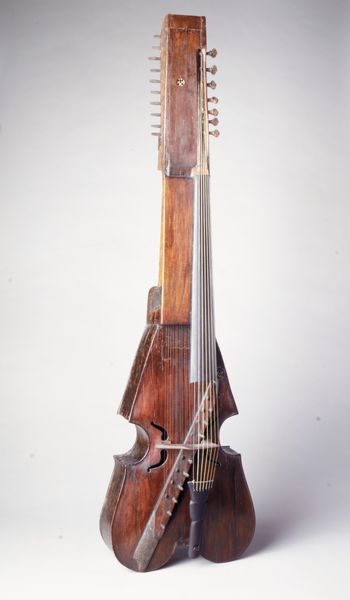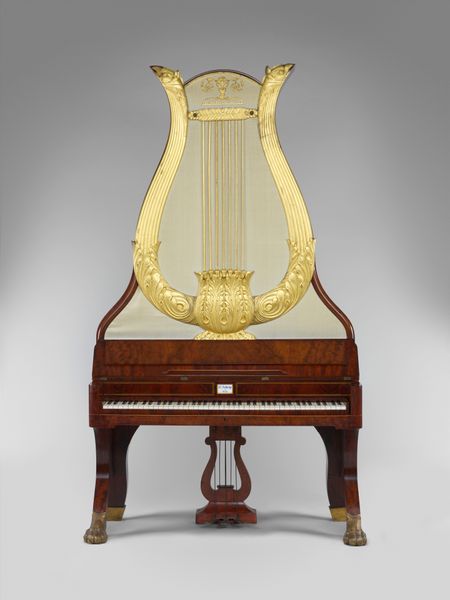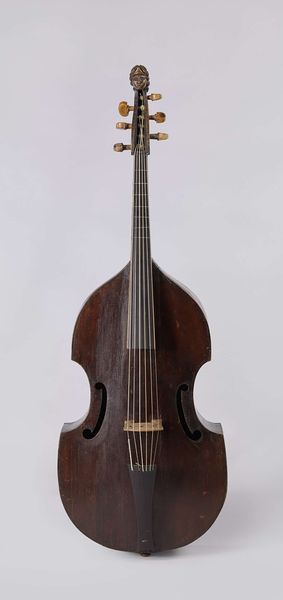
sculpture, wood
#
baroque
#
sculpture
#
sculpture
#
wood
#
musical-instrument
#
decorative-art
Dimensions: Height: extreme 198.5 cm. length of pillar 188.0 cm., above soundboard 128.5 cm. Soundboard: resonating length 118.0 cm., greatest width 51.0 cm.; Strings: longest 168.0 cm. shortest 11.0 cm. c2 27.0 cm.
Copyright: Public Domain
Editor: This object is the Welsh Triple Harp, made between 1730 and 1770, attributed to John Richards. It's currently held at the Met. The woodwork looks so detailed and impressive for such a delicate instrument! What do you see in this piece? Curator: I see a fascinating intersection of cultural identity and socio-economic power. The Welsh Triple Harp wasn't just a musical instrument; it was a symbol of Welsh cultural preservation, particularly amongst the landed gentry. Owning such an ornate harp indicated not only a connection to Welsh traditions but also a level of wealth and status to commission such craftsmanship. Editor: That makes sense, like it was something of a status symbol in Welsh society? Curator: Precisely! The very existence of this harp in the 18th century flies in the face of anglicization policies. While English influence was prevalent, the harp represents resistance and a conscious effort to maintain distinct cultural markers. Editor: So, it was political in a way? Curator: Absolutely. Musical instruments often become powerful symbols. Think of the Scottish bagpipes or the Irish harp. This piece embodies a tangible form of cultural agency in a time of potential assimilation. What about its physical form intrigues you? Editor: I didn't realize that! Thinking about it politically gives it a new life and deepens its narrative. Curator: Indeed. And considering its current placement within a museum like the Met adds another layer – its journey from a symbol of Welsh identity to a globally recognized art object. Editor: It’s like a continuous evolving narrative. Curator: Exactly. These instruments carry cultural stories across time, museums are cultural gatekeepers. A poignant reminder of the power of art to embody identity and challenge dominant narratives.
Comments
No comments
Be the first to comment and join the conversation on the ultimate creative platform.
